Steemit Crypto Academy Season 4, week 4- Intermediate course|: Solana Blockchain
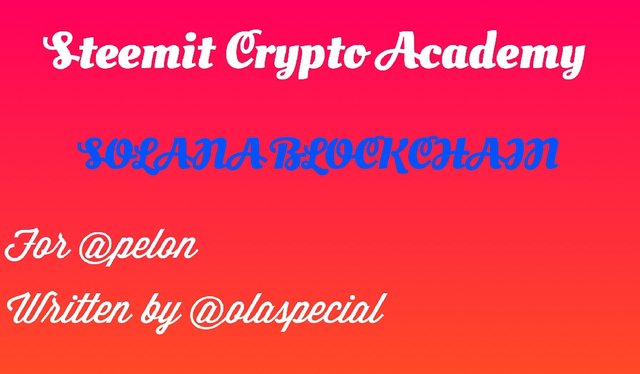
Explain in detail the PoH of Solana.
Number one that the photo you've taken was taken before today's New York Times was printed because otherwise they couldn't have printed it of course. But also they will know number two which is that the photo was taken after yesterday's version of the New York Times was printed. Otherwise, you couldn't have held it up in the photo. So, that way it gives you a way to figure out when you took that photo in relation to other events and that essentially is the spirit of proof of history.
For the more technical folks, the way that Solana does is on their actual blockchain is to hash information from say transaction 1 and put it into transaction 2, hash that and then put it into transaction 3 and so on. So that every single transaction essentially contains information about their position in relation to other transactions and this is actually not unlike what miners do on the Bitcoin blockchain. When they hash the previous block header and put it as part of the current block header as they mined the current block.

Explain at least 2 cases of use of Solana.
Decentralized Finance
So, this actually allows them to scale a peer-to-peer distributed ledger. That's still cryptographically verified to be there by the network itself.
Collectables
It can be used to buy and sell nft collectables. It provide easy, and fast transactions.
Data Structure
When you look at the Bitcoin data structure, you can kind of calculate how much electricity was spent to build it because of how difficult it is to compute these blocks, to compute solve the puzzle. To create a block in Bitcoin you need to use a lot of electricity and a lot of course. We can also use time and how we can actually get the time is using the same technique as the same kind of mathematical operation a Bitcoin does to solve its puzzle. This is a pre-image resistant hash function that's called sha-256 and a hash function is as a way to kind of to get a unique identifier for our arbitrary data.
You have like any any amount of bits and you throw into this hash function and the spits out a constant number of bits and this constant number is large enough such that the probability of collision is not like infinitesimally small. It would take like millions of universe ages for you to do you have a collision so because of this we can start looping this function and create this data structure that's this continuous set of hashes that goes on as fast as a single CPU core, a single thread. So really only one computer in the world is doing this at a time can generate and once you have this like this data structure that's generated in real time. You can then you start using it as a clock and that's kind of like how things came together from there.
Security
A leader is a node that's elected in some randomized fashion in this Solanna blockchain to upend the blockchain or in Solana terms to generate a Proof of History sequence and after they generate that sequence they then broadcast a solution to the rest of the network of verifiers to individually verify that, okay this sequence is valid and that's why it can be appended. So, it's not unlike the Bitcoin blockchain wherein the miner who completes the Proof of Work puzzle first basically gets to mine that new block and then they broadcast that solution to the new block to the rest of the network for validation.
To solve the problem of scalability
Scaling up the Blockchain been a problem for global adoption have been a problem every since the launch of Bitcoin, and Solana was built 2017 to solve the issue of scalability.

Detail and explain the SOLA token.
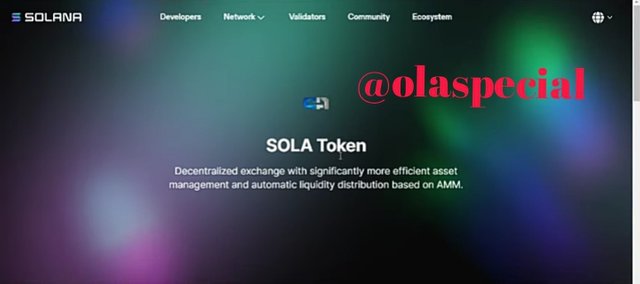
source
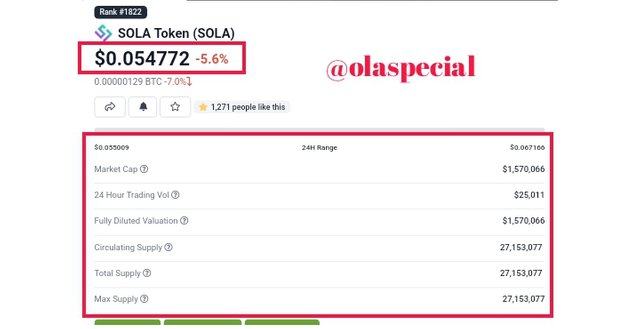
source
As at the time of writing the Sola token price was $0.054772, market cap $1,570,066, 24hr trading $25,011, circulating supply $27,153,007, total supply $27,153,077, and the max supply $ 27,153077.

When did Solana Blockchain see its operations interrupted? Why? Explain.
The response in another reply Yakovanko told a user that the issue is due to overwhelming transaction volume during an initial DEX offering or IDO for a project. An ideo is a type of public token sale similar to an ICO only it happens on a decentralized p2p exchange rather than a centralized platform. So, this was going on in IDO for radium.
It's akin to uniswap on ethereum the launched IDO appears to be for grape protocol. It's a popular tool kit for Solana defi apps. So, this was taking place on radium which is Solana-based but it's a different project than radium. It was a great protocol on Solana. It's kind of like the matrix style going into deeper levels but it all comes back to Solana. It was interesting that one project was able to overwhelm this but I guess there was just a lot of other stuff going on as well.
Yakovanko bots were flooding the network worth over 300 000 transactions per second. This caused problems for the Solana's transaction cues. In another tweet, he wrote that some of the issues were already being addressed but that the software update wasn't yet available. The user tried to use the network but it wasn't working. They want to interact with d5 protocols, it was not working. They want to buy and sell nft collectibles, everything was down. Several NFT projects was been postponed, airdrops were been postponed.

Check the last block generated in Solana and make an approximate calculation of How many blocks per second have been generated in Solana, taking into account from the initial block to the current one? Justify your answer and show screenshots.
This is main page
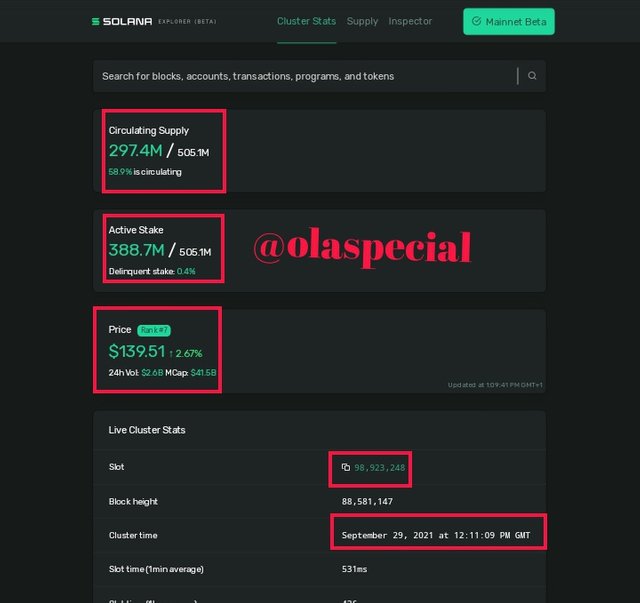
source
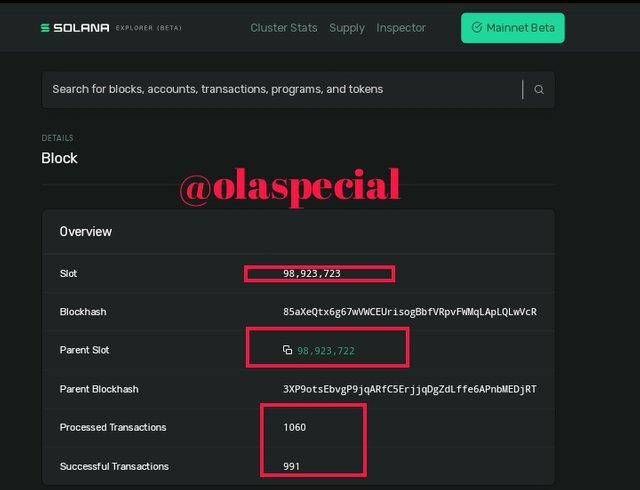
source
Block 1
Time: Nigeria Time 11:30:51
Date: March 16 2020
Number of Transactions: 4
Successful Transactions: 4
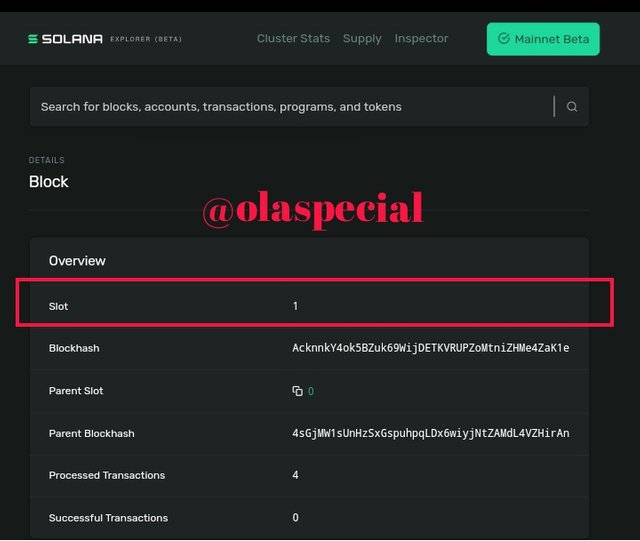
source
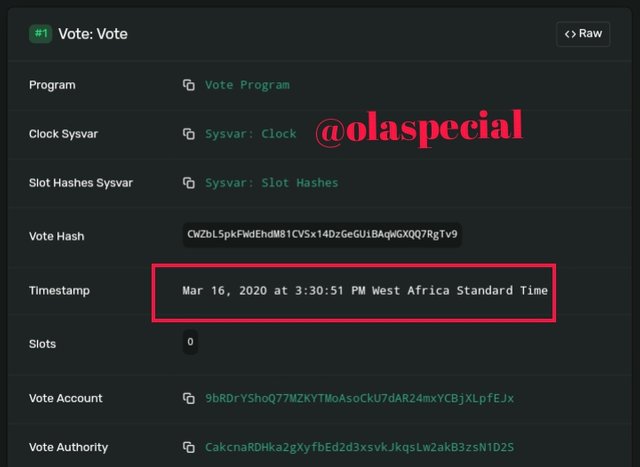
source
The Solana Blockchain process 1 Block every 0.5s. Then it proceeds to calculate the current total time. The current block is 98,923,723.
Block Number × Second = 60s × 0.5 = 2
Minute = 2 × 60 = 120
Time = 120 × 60 = 7200
Day = 7200 × 24 = 172.8
Month = 216.000 × 30 = 5.184
Year = 5.184 × 12 = 62.208
2 blocks = 1sec
Total time to the current Block = 98,923,723 × 0.5
= 49,461,861.5sec

Gracias por participar en Steemit Crypto Academy Season 4, Semana 4:
En los casos de Uso, deberías nombrar 2. Por ejemplo un caso de coleccionables (NFT) y otro.
Muy bien lo del bloque 1, lograste conseguir la fecha, pero no usaste ese valor para obtener los segundos totales hasta el último bloque. Luego lo que haces es dividir el último bloque entre los segundo totales conseguidos anteriormente.
Buen trabajo.
Recomendaciones:
Profundizar un poco más del tema
Espero seguir leyendo tus publicaciones.
Calificación: 8.0
Hizo Power down después de corregido el trabajo y votado

It has been cancelled.